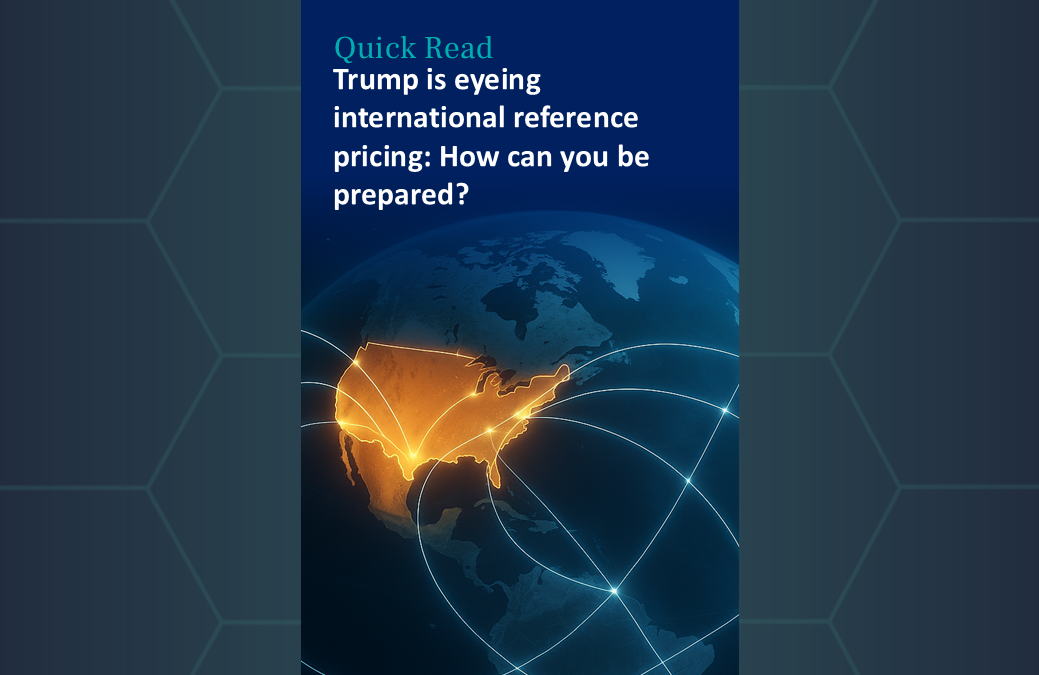A recent publication by the think tank America First Policy Institute has suggested the USA implements measures to lower pharmaceutical prices – essentially, international reference pricing (also known as international price referencing, external reference pricing, and other variations). Pharmaceutical prices in the USA tend to be higher than in other developed countries, in part due to the fragmented pharmaceutical payer base and the lack of a health technology assessment body responsible for negotiating at a national level. However, the new administration could look at implementing changes to bring USA prices closer to those elsewhere. Read on to catch up on what we know so far and how we think pharma should be preparing.
IRP policy changes – why acting now matters
The aim of the suggestions made in the America First Policy Institute’s brief is to reduce the price gap between the USA and other economically similar countries. However, the fragmented payer base makes this complicated – it could be limited to Medicare and focus on established, high-spend products. Alternatively, it could be expanded to commercial health plans or be used to control prices of newly launched products. Equally, it doesn’t necessarily mean cheaper prices in the USA – it could also mean higher prices in other countries.
It should be noted that this isn’t an entirely new idea from the Trump administration – the Most Favored Nation model was proposed in Trump’s first term in office. (The Most Favored Nation model is also mentioned as an option in this new publication.) However, we’ve seen in the last few weeks how quickly economic policies can come into effect under this administration. Things can change quickly, and while these international reference pricing suggestions are coming from think tanks rather than the Office, the potential ramifications and huge uncertainty make this something to prepare for now.
How could it happen?
The think tank mentions a variety of different options, each with different outcomes and ways to get new policies in motion. Some involve adapting the Biden administration’s Inflation Reduction Act to focus on certain Medicare products, others involve reviving the Most Favored Nation model or the “International Pricing Index” model.
When could it happen?
In short – no one knows.
The USA government hasn’t mentioned this publicly since the start of this term. However, anonymous sources (according to this Reuters article) have claimed that international reference pricing policies are on the Trump Administration’s priority list. And we’ve seen recently that the current office acts swiftly, so it warrants being prepared.
How can I prepare for these potential international reference pricing changes?
The concern here is the uncertainty – “if?”, “when?”, and “how?” are all unanswered questions but each has multiple plausible answers. So, the best way to prepare is to understand how each potential scenario affects you. This means using an international reference pricing simulator to model every scenario that’s in play to understand the impact on your USA and global prices.
What makes a good international reference pricing simulator?
There are a few key things you want to make sure your international reference pricing tool can do to ensure you are getting trustworthy and comprehensive insights in your scenario analysis.
Ability to model post-launch events
You need to ensure that your simulator can handle multiple reference pricing events and not just ones at launch. Our projects have shown that failure to account for post-launch referencing events can results in 31% revenue mis-forecasts during launch sequence optimizations. This is particularly important for the Most Favored Nation model, as the price will reduce further each year for four years.
Launch sequence optimization capabilities
With the risk of new international reference pricing policies impacting future-launching products, it’s important to understand how these policies could affect your optimal global launch sequence. If the USA references the price of your product when it launches in another country, how will that impact your revenue?
Expert support
When big changes like this crop up, you need to be confident that the way you are simulating your scenarios is reflective of the rules you are trying to model. Even the most comprehensive referencing tool benefits from a strong support system – that means talking to real experts, real people who know the tool like the backs of their hands and can give you the guidance you need.
Our experts can help
Whether you already have access to our international reference pricing simulator, use another tool, or have never considered international reference pricing before, our experts can help.
Get in touch through the form below to find out more about how we can help you.

